There are many cold-hardy chicken breeds that lay fresh eggs in cold climates, but there is a specific group of breeds that are considered “cold hardy.” These chickens typically have smaller wattles and small combs compared to hot weather chicken breeds other chicken breeds, which makes them less likely to be frost bitten.
They are also full-feathered making them able to retain warmth in cold temperatures.
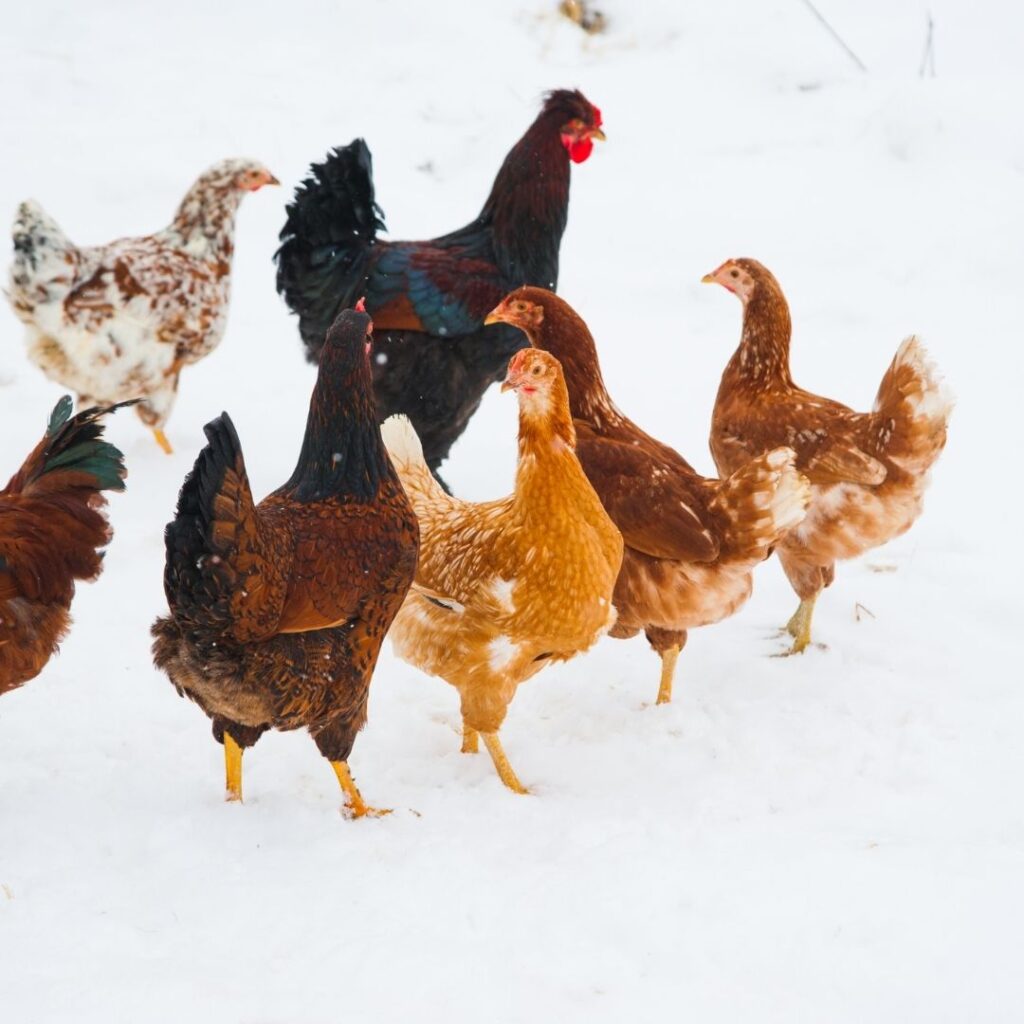
Some chickens also have feathers everywhere. Feathered legs and feathered feet can become wet and more easily lead to frost bite. These chickens may require being kept inside their coops during wet snowy weather.
If you live in an area where temperatures dip below freezing, you want to be sure you’re choosing winter-hardy breeds for your backyard flock.
What is a Cold Hardy Chicken Breed?
The cold-hardy chicken breeds are bigger, more muscular, and have more body fat than hot-weather chicken breeds. This helps keep them warm in the colder weather. They may not always be as beautiful as some other chicken breeds, but they are tough enough to handle the harsh winters.
Several cold-hardy breeds are both hardy and great for meat or egg production. They also do well in a mixed flock, allowing you to have a colorful variety of birds and eggs.
Related: Reasons Chickens Stop Laying Eggs here.
What is the Coldest Temperature Chickens Can Tolerate?
Chickens can tolerate lower temperatures pretty well. We raise our chickens in New England weather and in over 25 years have never lost a single bird to cold weather. This is due to their high metabolic rate, body temperature, and fast heartbeat. Chickens are able to live in colder weather than humans can. They do a good job maintaining their body heat in groups too.
However, chickens cannot tolerate colder temperatures below freezing, 32 degrees outdoors. If they are subjected to cold weather for long periods they may experience frost bite.
This can lead to the loss of your chicken. For this reason, it is important that chickens be kept in a coop that stays warmer during the winter months.
What Cold Weather Chicken Breeds Lay in the Winter?
Chickens will do well with the same breeds or mixed flock breeds. Find a breed that meets your needs and curiosity about learning about new birds then start raising and collecting eggs in just a handful of months.
1. Ameraucana
If you’re looking for a cold-hardy chicken that can withstand harsh winters, Ameraucana chickens are a great option. These birds have a pea comb and small wattles, which help to keep them from getting frostbite.
Ameraucana chickens come in a variety of colors, so you can find one that fits your personality. They are also less susceptible to frostbite than other breeds of chicken, making them perfect for colder temperatures.
In addition, Ameraucanas lay medium-sized blue eggs, (approx 180-200 a year) so they are productive members of the flock.
Read More About The Ameraucana Chickens Here.

2. Australorp
The Australorp is a heavy, cold-weather breed of chicken that is well suited to the winter windy climate.
These chickens are known for their black iridescent feathers, small single comb, and small wattles.
Australorps are generally considered to be a cold hardy breed.
The Australorp lays eggs all year round and is known for its good egg production. They lay approximately 250 large brown egg annually.
Read More About The Australorp Here.
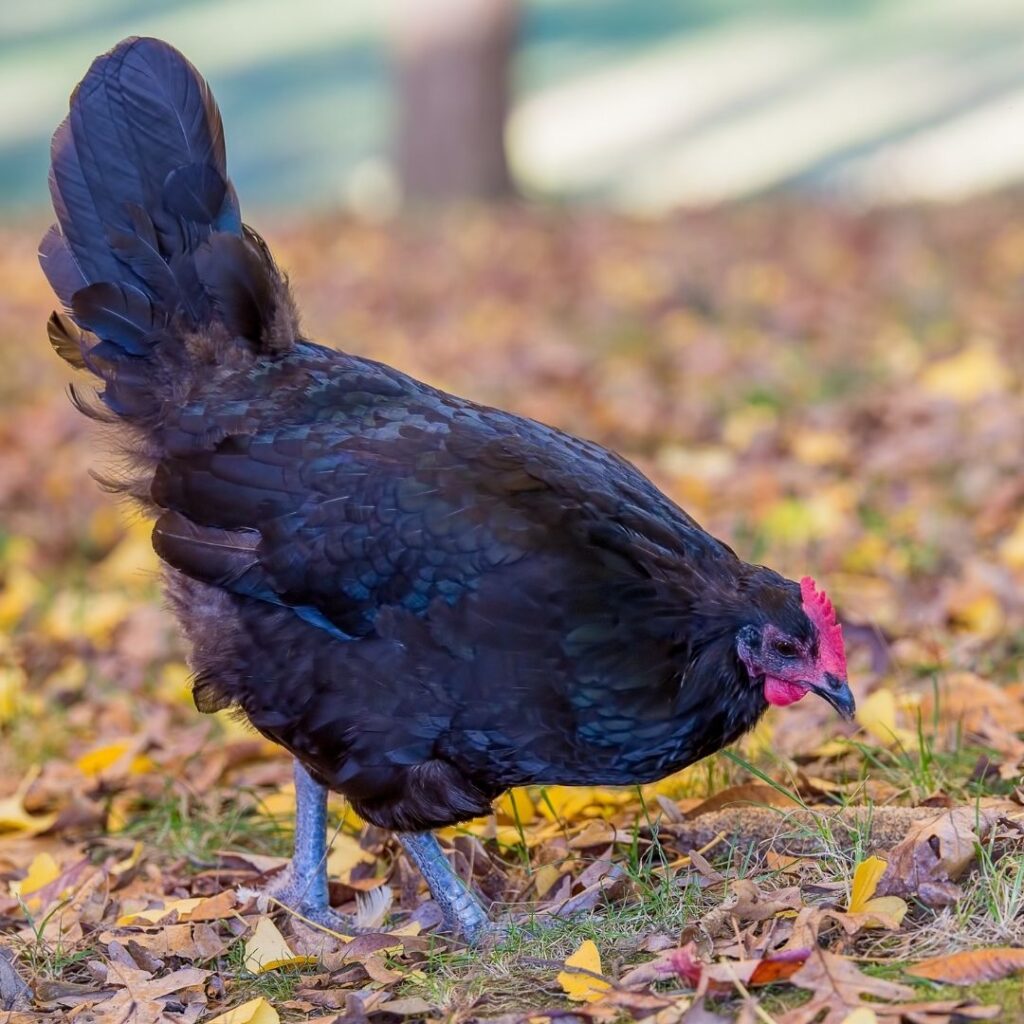
3. Brahma
Brahmas are a dual-purpose breed, bred for meat or eggs. They have sweet temperaments and many people keep them as pets with benefits. Even the roosters are known to be great pets.
Brahma chickens are large and friendly. They weigh in around 7 – 9 pounds. Brahma’s are known for being resistant to the cold.
These birds need dry bedding to avoid foot problems. Their feathered feet need to be watched and kept dry to avoid frostbite.
The hens lay medium to large brown eggs, approximately 150 per year.
Related Reading: Read About Brahma Hens and Roosters Here.
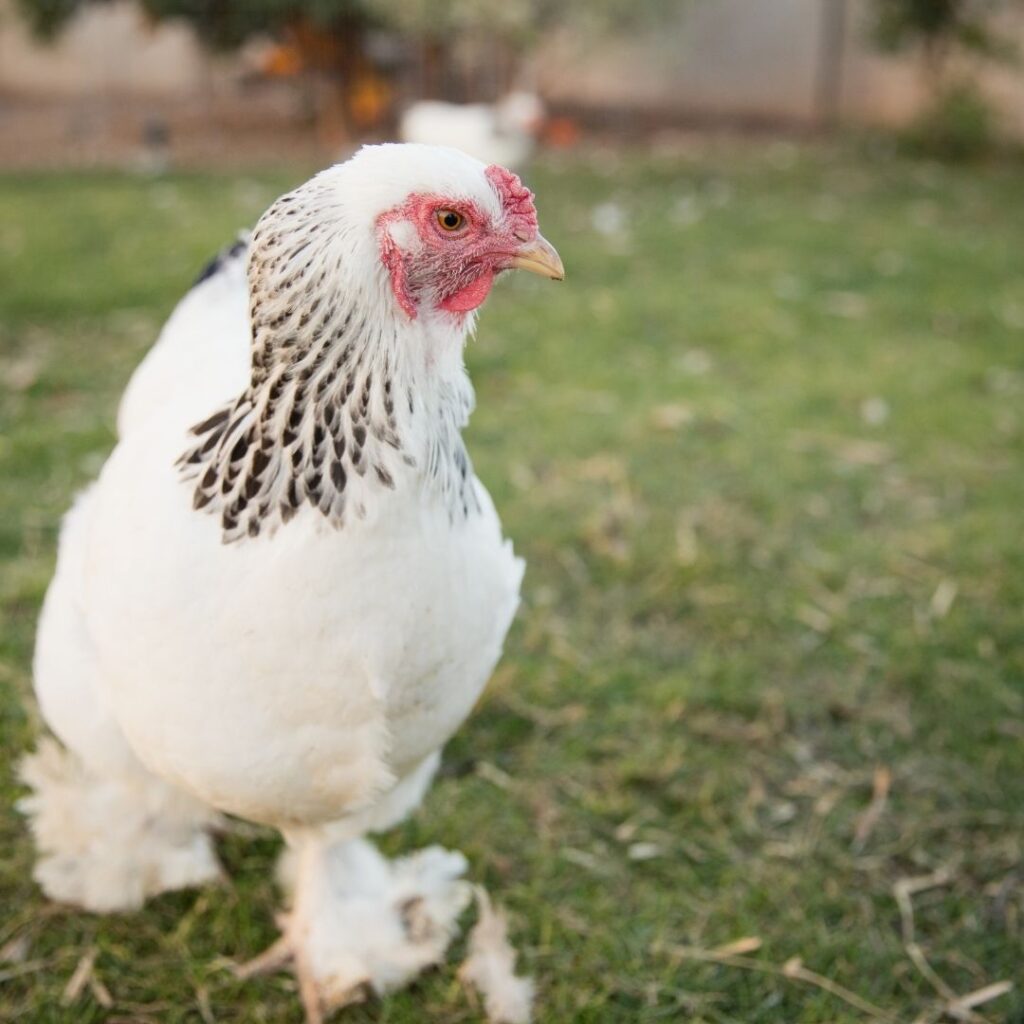
4. Buckeye
Buckeye chickens are a breed of dual-purpose chicken. They get their name from the fact that they originated in Ohio and are a popular bird there. (Ohio is known as the Buckeye state)
These are a good-sized breed, weighing around 6 – 7 pounds. They’re known to be friendly and great foragers, making them excellent for free-range flocks. Their full feathers and size, breed combination makes them great cold hardy chickens.
Buckeye chickens lay between 150-200 medium brown eggs per year. This breed also has a reputation for laying eggs right into and through the winter months.
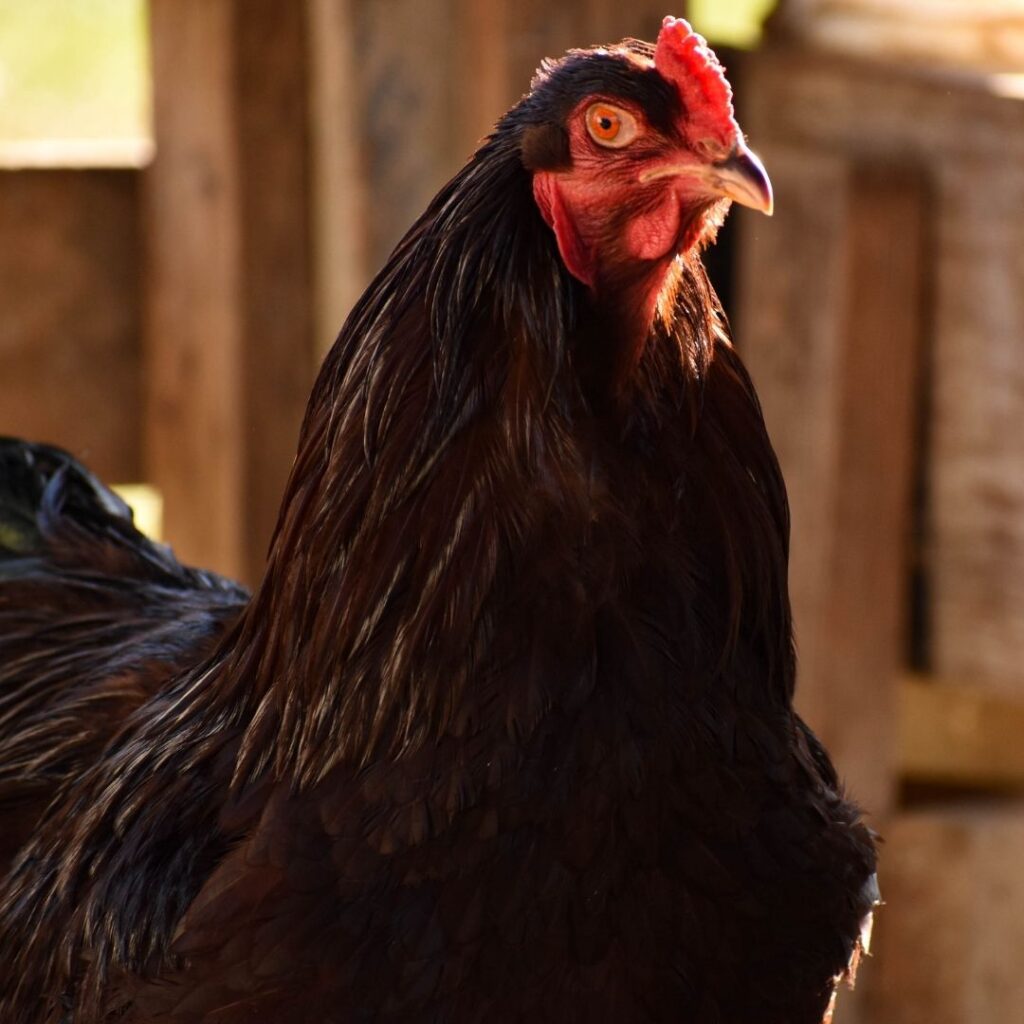
5. Chantecler
The Chantecler breed of chicken was developed in the early 1900s in Canada. They are a cold-hardy breed. They were bred to be one of the most cold-hardy chickens around.
Its origins were as a meat bird that would be able to withstand harsh Canadian winters. Their moderate size; Roosters weigh about 8½ pounds and hens weigh roughly 6½ pounds combined with their rich full feathering are exceptionally cold hardy traits.
Chanteclers have pea combs (very small combs), very small wattles, and big bodies, which makes them perfect for resisting frostbite and tolerating cold weather.
Chanteclers are docile, friendly chickens that can lay about 180 medium brown eggs per year.

6. Cochin (Buff Cochin)
Cochins are a popular winter chicken, but they lay fewer eggs than other breeds.
These birds are commonly owned as pets for their friendly, easy-going personalities.
They lay small light brown and cream-colored eggs and produce a small amount yearly, approximately
Read More About The Cochin Here.
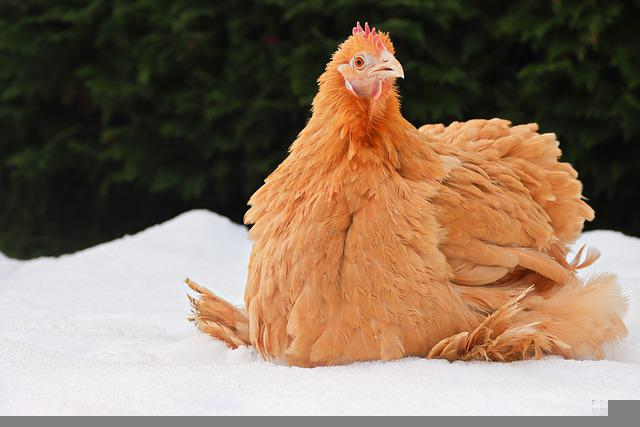
7. Delaware
The Delaware chicken breed was originally bred in the early 1900s as a meat bird. They are often quite large, weighing in at 6 pounds for females and up to eight pounds for males. Delaware chickens are friendly and great with children.
In addition, they lay all year round. Delaware hens are considered ideal for Northern farms due to their ability to withstand cold climate conditions.
These bids lay 250+ eggs a year. Eggs are large and brown.
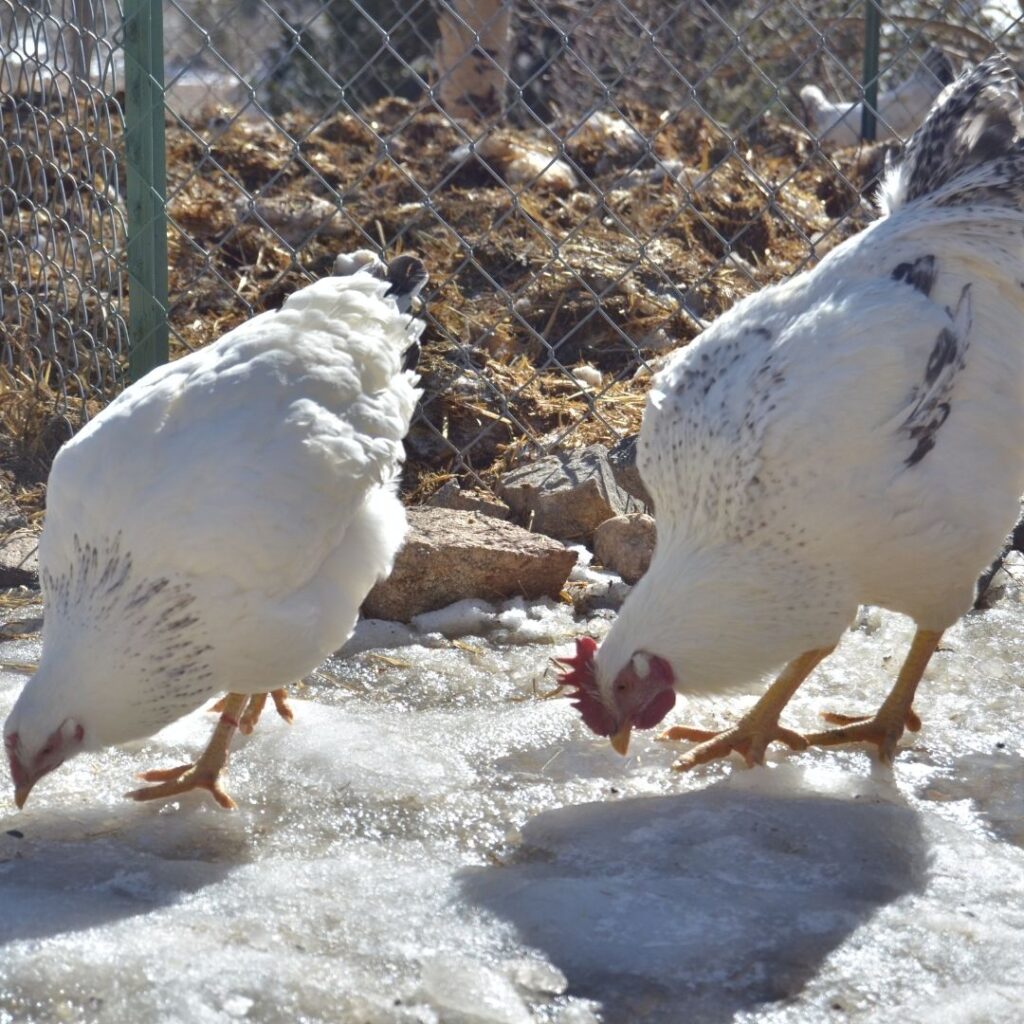
8. Dominique
Dominiques are a medium chicken breed weighing between 5 – 6 pounds. They have a rose pea comb that helps reduce frostbite. They’re known to be sweet and social, making them great additions to any flock. They make great family pets as well.
Dominique chickens are cold-weather chickens and even live well in notorious Canadian winters as well as Alaska. In fact, they put out an egg almost every day during the winter months.
These Dominique chickens’ average egg production is around 220 medium brown per year!
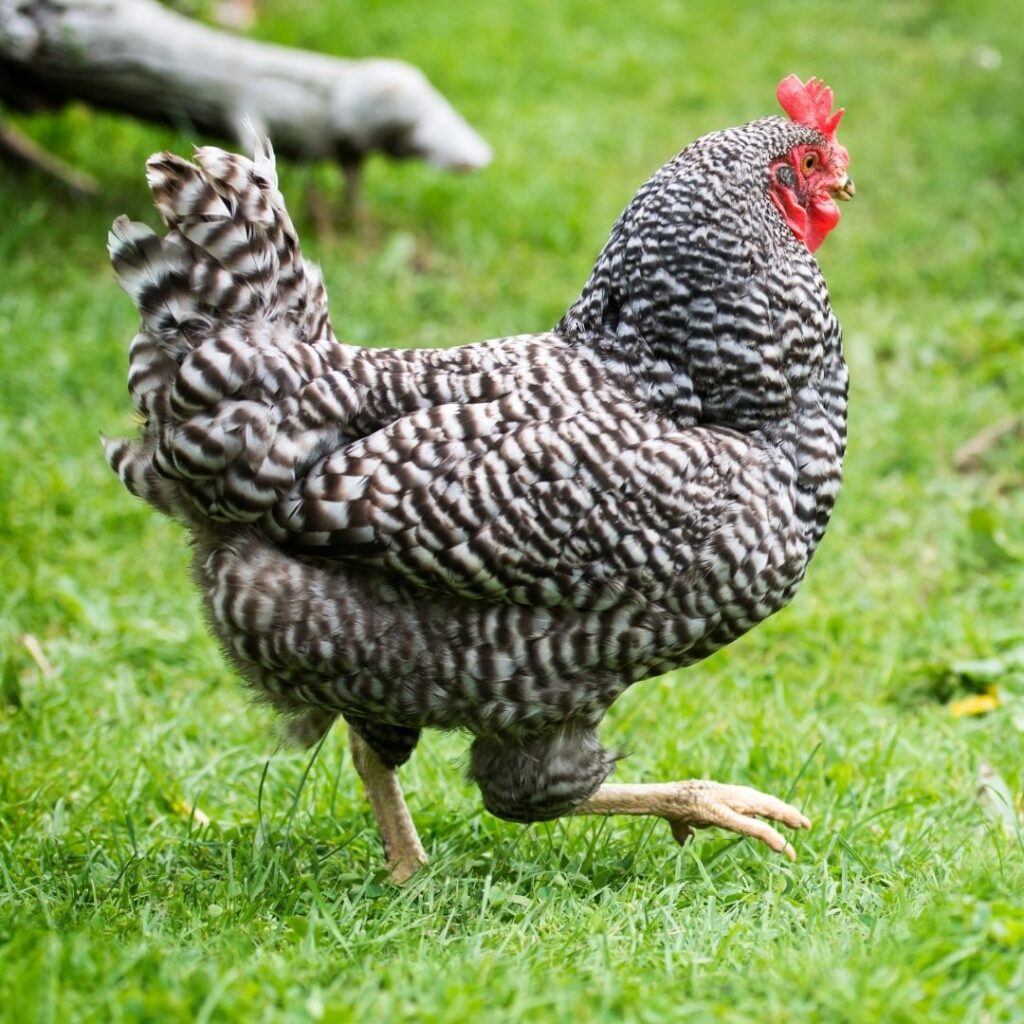
9. Easter Eggers
The Easter Eggers are another excellent breed for those who live in cold winter weather. Easter Eggers are smaller than most other cold-climate chicken breeds. They weigh between 5 – 6 pounds.
Their small pea combs help reduce the risk of frostbite.
They have a great disposition and love to forage, making them great for free-range.
These birds lay about 240 medium-sized light blue eggs, light green, and even pink eggs(a small percentage will lay brown) a year.
Read More About The Easter Eggers Here.
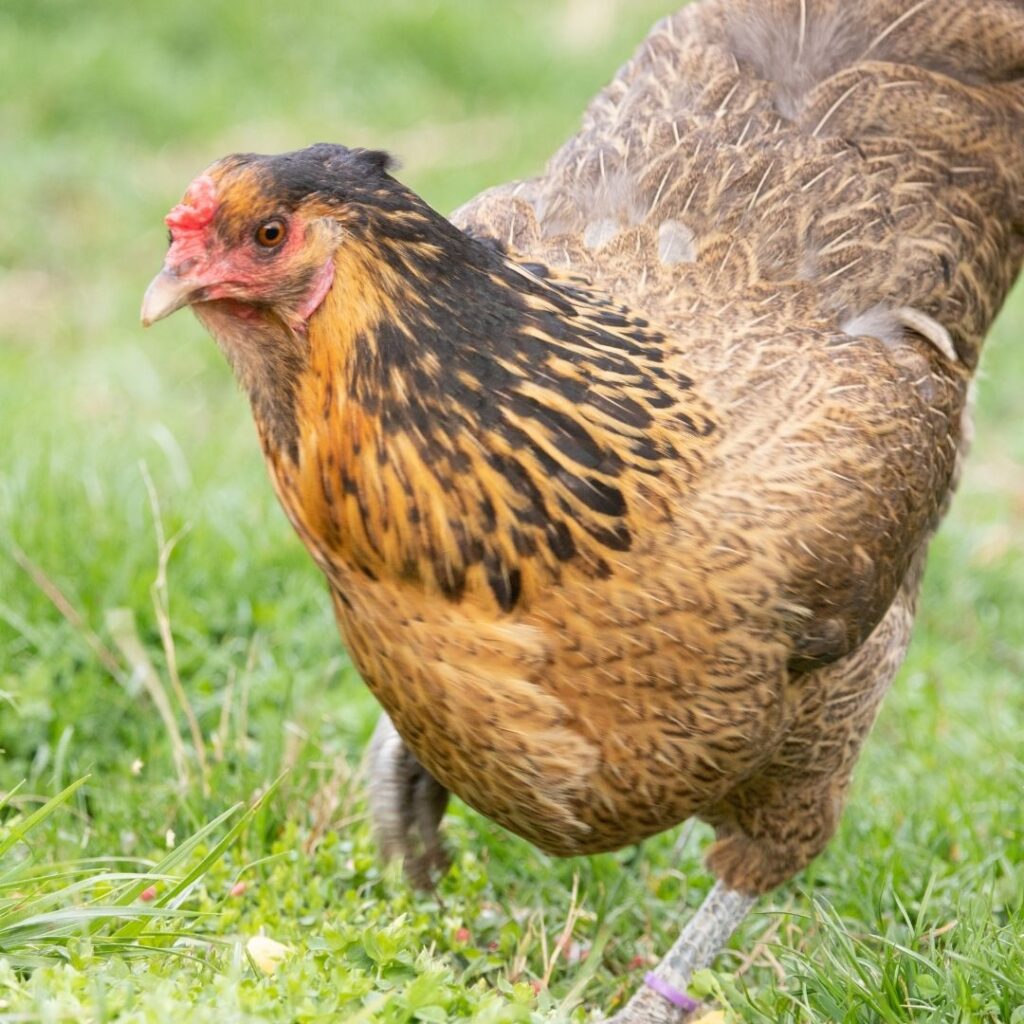
10. Jersey Giant
Jersey Giants are some of the best chicken breeds for those looking for cold-hardy chickens. They can weigh between 8 and 9 pounds and raised as meat or egg layers because they’re so hardy and resilient. These birds were originally bred for meat.
The hens will lay extra-large eggs that are brown. You can anticipate getting about 240 eggs per year for each hen when raising this breed’s chickens.
Did you know? Jersey Giant Chickens are the largest chicken breed in the world.
Read More About The Jersey Giant Here.
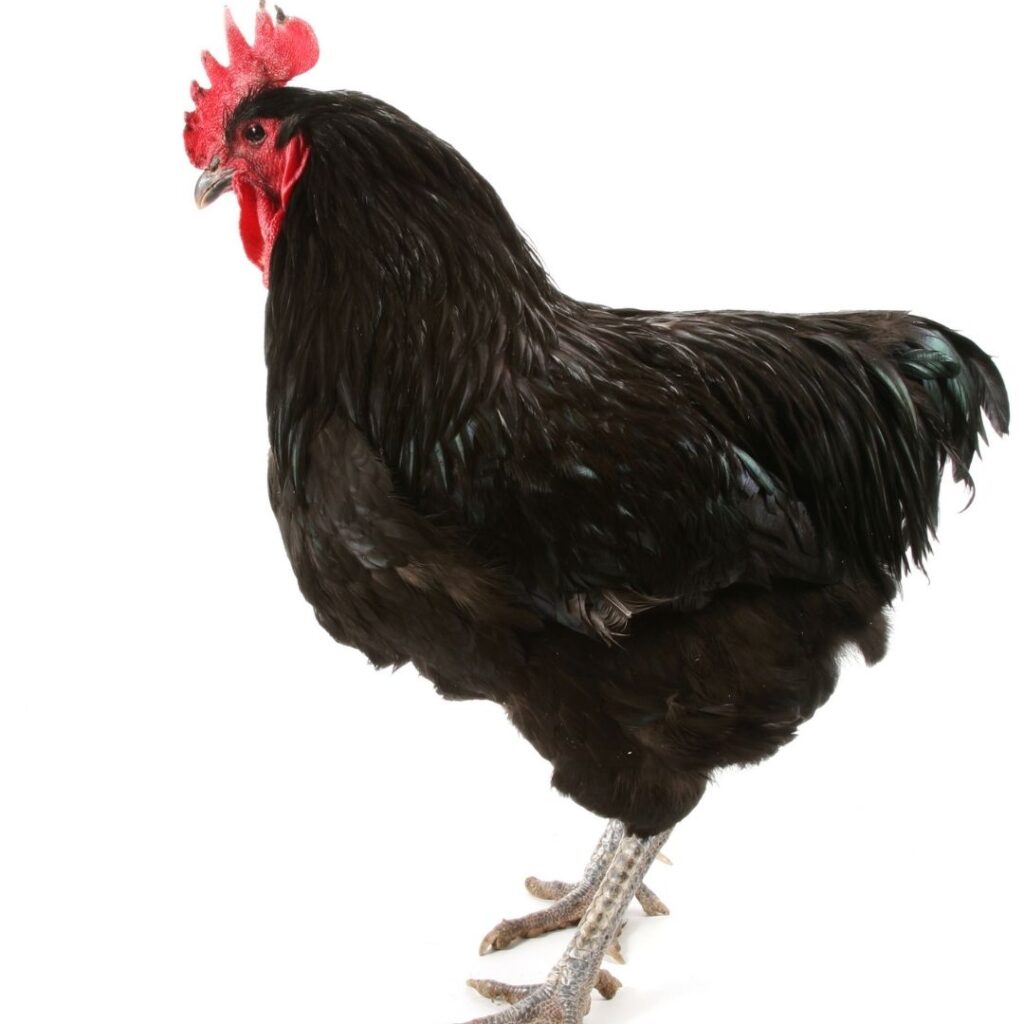
11. New Hampshire Red
The New Hampshire Reds are a dual-purpose breed and known to be one of the more popular cold hardy chicken breeds. After all, they were developed in New Hampshire where they’re known for their cold climate in the winter months.
New Hampshire Red chickens are docile and friendly, making them a good backyard bird or pet. They’re also good foragers, which is a quality for good free-range chicken breeds.
New Hampshire Red Chickens weigh about 5 – 6 pounds. The hens lay brown, large eggs, approximately 250 a year.
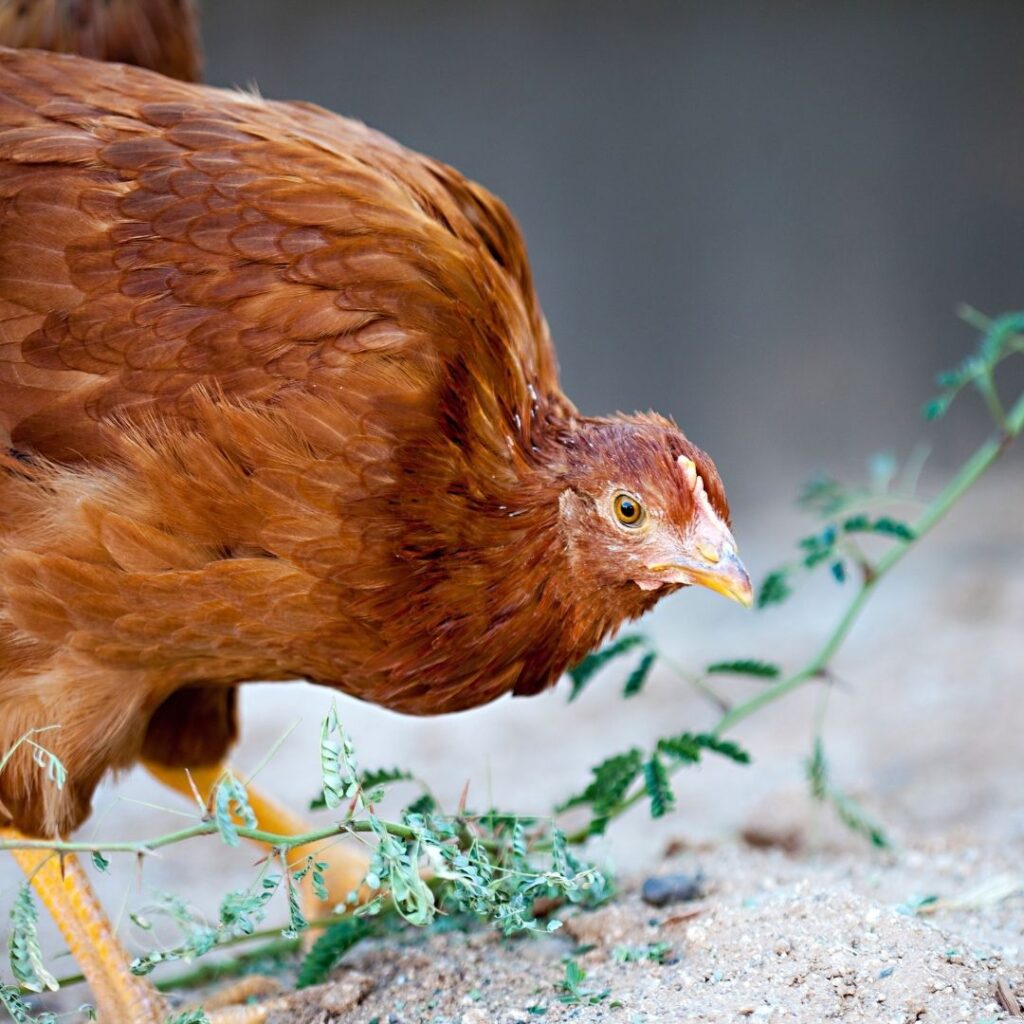
12. Olive Egger
The Olive Egger is a medium chicken breed that does well in cold climates. They weigh 5 – 6 pounds. The hens are known for laying green eggs, thus the name olive eggers.
These are friendly and active chickens. They’re also a great dual-purpose chicken.
These cold-weather chickens lay olive green eggs that are large. You can expect about 250 eggs a year from these hens.
These Olive Eggers are great fun for children to find colored eggs in their morning collecting chores.
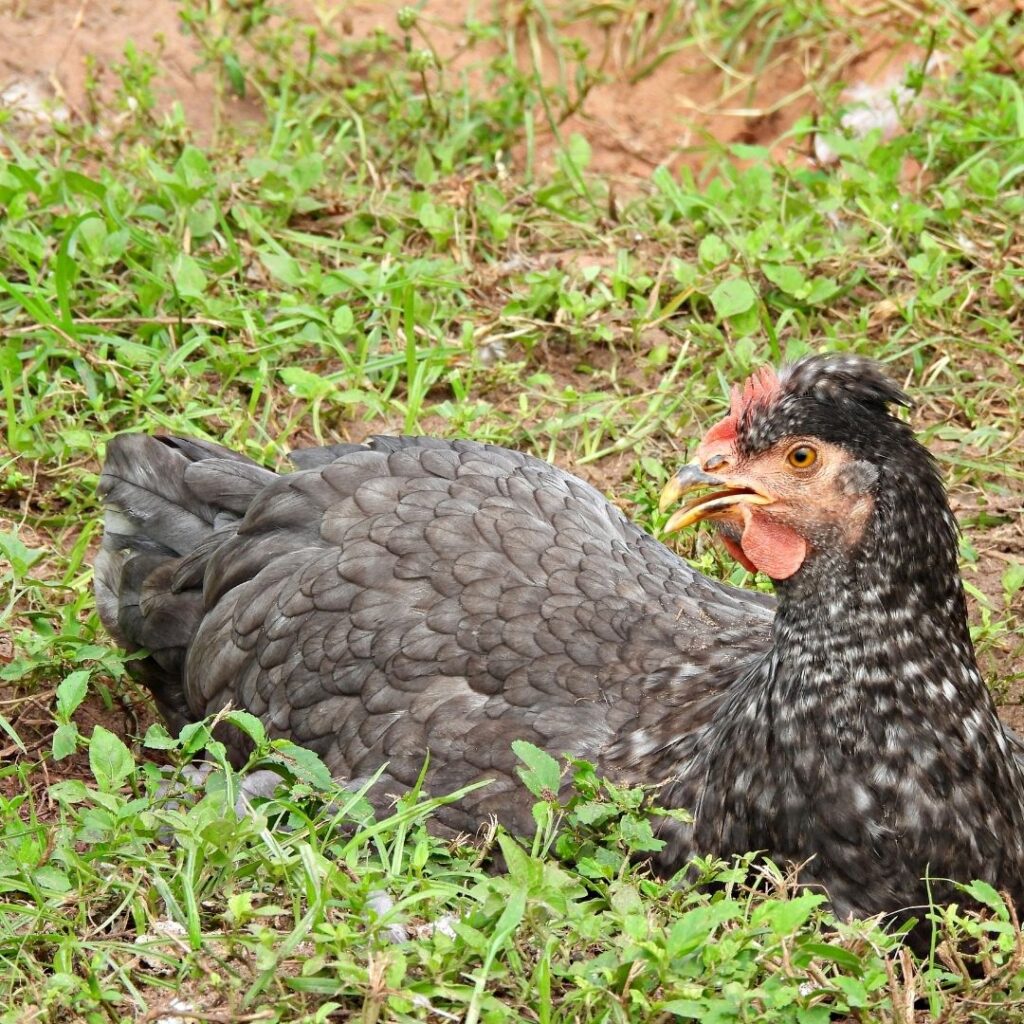
13. Orpington (Buff)
The Orpington chicken is a popular breed that appears on many “best of” lists. They are versatile and thrive in various environments, making them perfect for cold weather.
The Orpington chicken’s warm feathers make them not only a beautiful chicken but also one of the favored cold hardy chicken breeds.
The Orpington chickens have fluffy plumage and often go broody, which makes them good mother birds. (see more on broody hens here) Additionally, they are docile and kid-friendly, making them a great choice for families. The Orpington is also dual-purpose, meaning it can be used for eggs and meat.
The Buff Orpington chickens are large chickens. They weigh in around 8 – 10 pounds. Th lay medium brown colored eggs, and you can expect upwards of 280 eggs a year from the hen.
This is one of our top picks for a family looking to have pet chickens with children, raise chickens for the first time, and seasoned chicken hobbyists alike. We add a bonus for this chicken as it’s not hard on flower beds and gardens during warmer weather.
Read All About The Orpington Breed Here.

14. Rhode Island Red
The Rhode Island Red popular dual-purpose bird. They are very cold-hardy and have brownish-red plumage, yellow legs, and red combs. The Rhode Island Reds are a well-known dual-purpose breed of chicken They are bred for meat birds and for laying eggs while also being able to handle cold weather.
The Rhode Island Red and New Hampshire Red are both close relatives who can be easily confused with each other. New Hampshire Reds were developed from the Rhode Island Reds.
Did you know that this dual-purpose breed is also known as the Rhode Island State Bird?
This is one of the first chicken breeds we started with in our backyard flock and still today have a few laying hens. They also do well in warm weather. For many local flock owners, this is their only breed.
The Rhode Island Red laying hens will lay well eggs that are large and brown. You can expect to collect about 250+ eggs a year.
Read All About The Rhode Island Red Breed Here.
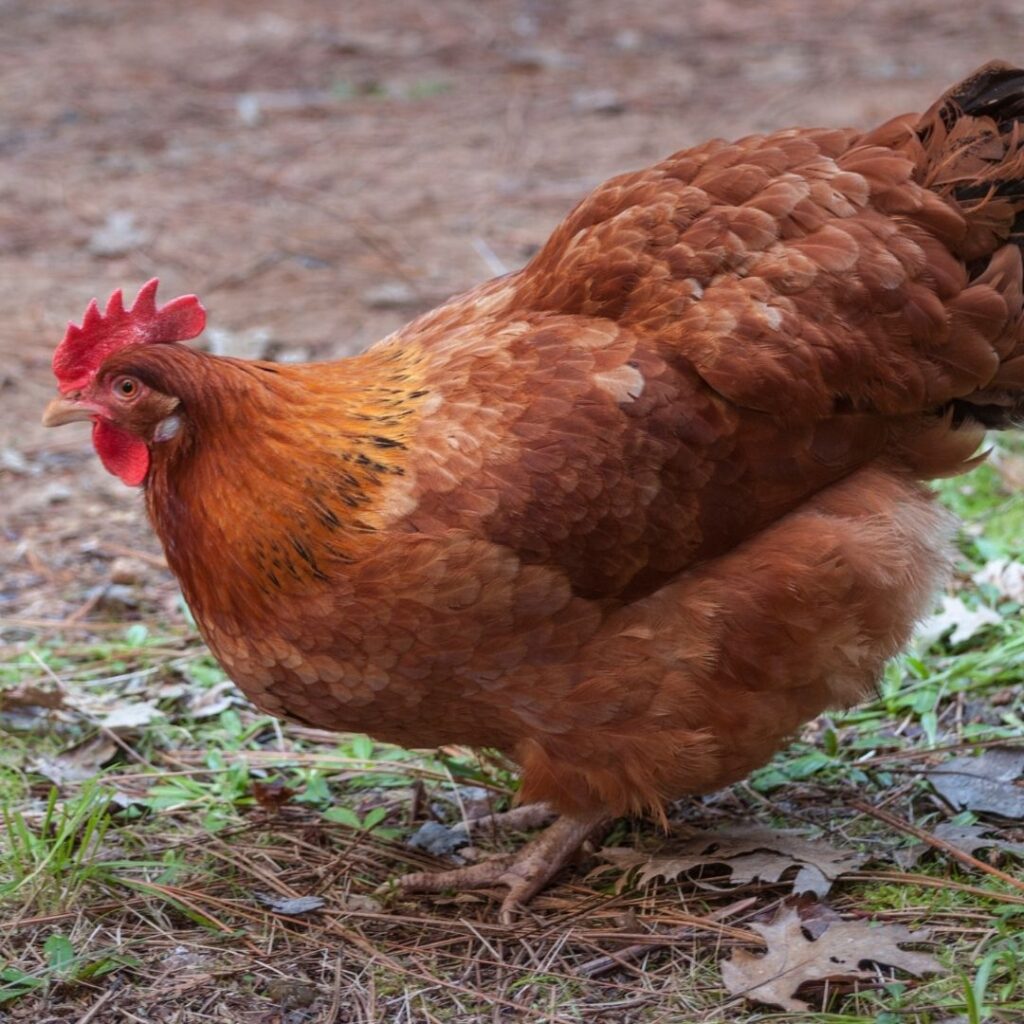
15. Speckled Sussex
The Speckled Sussex is the oldest breed recorded. It is said to originate in 43 AD. It is a dual-purpose bird, meaning that it can be used for both meat and eggs. The Speckled Sussex is known for being cold hardy and a good layer, making it a popular choice for chicken keepers in colder temperature climates.
Sussex chickens are friendly birds with a calm disposition. They are not as aggressive as some other breeds and make good pets.
Their appearance is unique and enjoyed by chicken enthusiasts worldwide. These birds have Dark Reddish Brown (some call Mahogony) colored outer feathers with white-tipped feathers creating a speckled appearance. There are also black and bluish-black feathers that make them almost sparkle at certain times of the day.
These birds weigh in around 7 – 8 pounds. The hens lay medium eggs, cream in color. They will produce approximately 220-240 eggs a year.
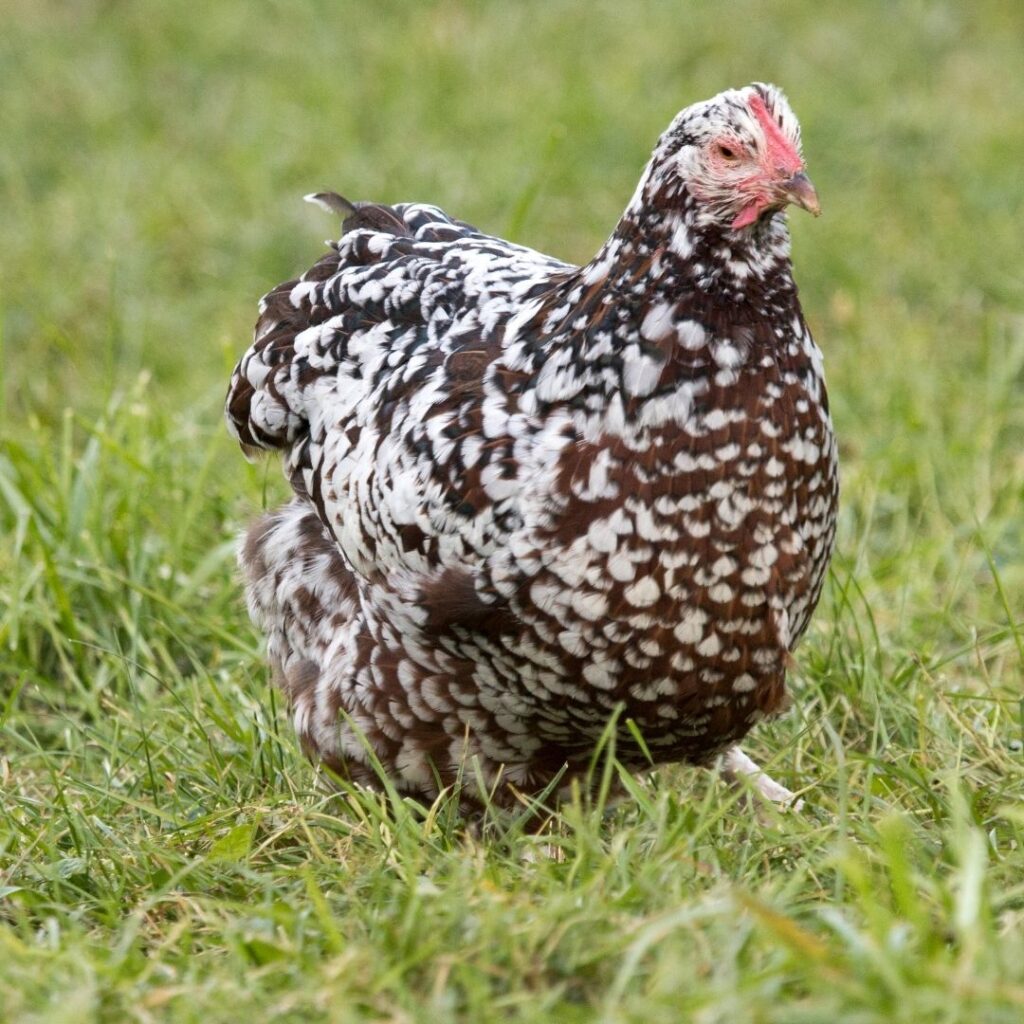
16. Silkie
Silkies are small, friendly, and sweet. They lay a tasty egg. Silkies are excellent mothers. Silkie Bantams are small but tough. The flock’s chickens provide delicious, nutritious eggs and a great source of protein. One of the best additions to my garden was a flock of these Silkie chickens – they provide eggs and make great pets!
Now that being said, their feathered feet can get wet and make them susceptible to frostbite. Also, their small size of only 2 – 3 pounds is not great for more than an inch or two of snow. These chickens should be kept in your coop to retain heat and a snow-cleared run area in the winter months.
While they are cold-hardy chicken breeds of chicken, they are more ornamental than for any serious egg production. The hens will lay about 100 eggs that are light brown and small.
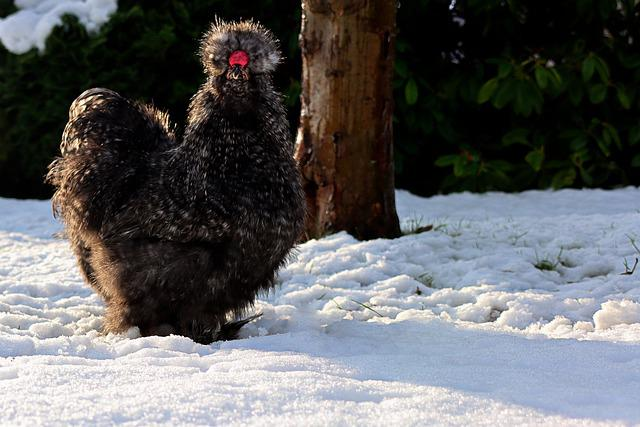
17. Welsummer
The Welsummer is a beautiful, cold-hardy chicken. This breed has attractive reddish-orange feathering, which is very hardy in the winter. The Welsummer is a dual-purpose bird that breeds well and lays many eggs.
Welsummers are a heavy-weight breed that lay about three large eggs per week. They are low maintenance and winter hardy. They’re great foragers making them another super chicken for free-range flocks.
These chickens are excellent for cold climates. They are medium in size, weighing 5 – 6 pounds. They lay large speckled brown eggs. You can anticipate an average of 250 eggs per hen per year.
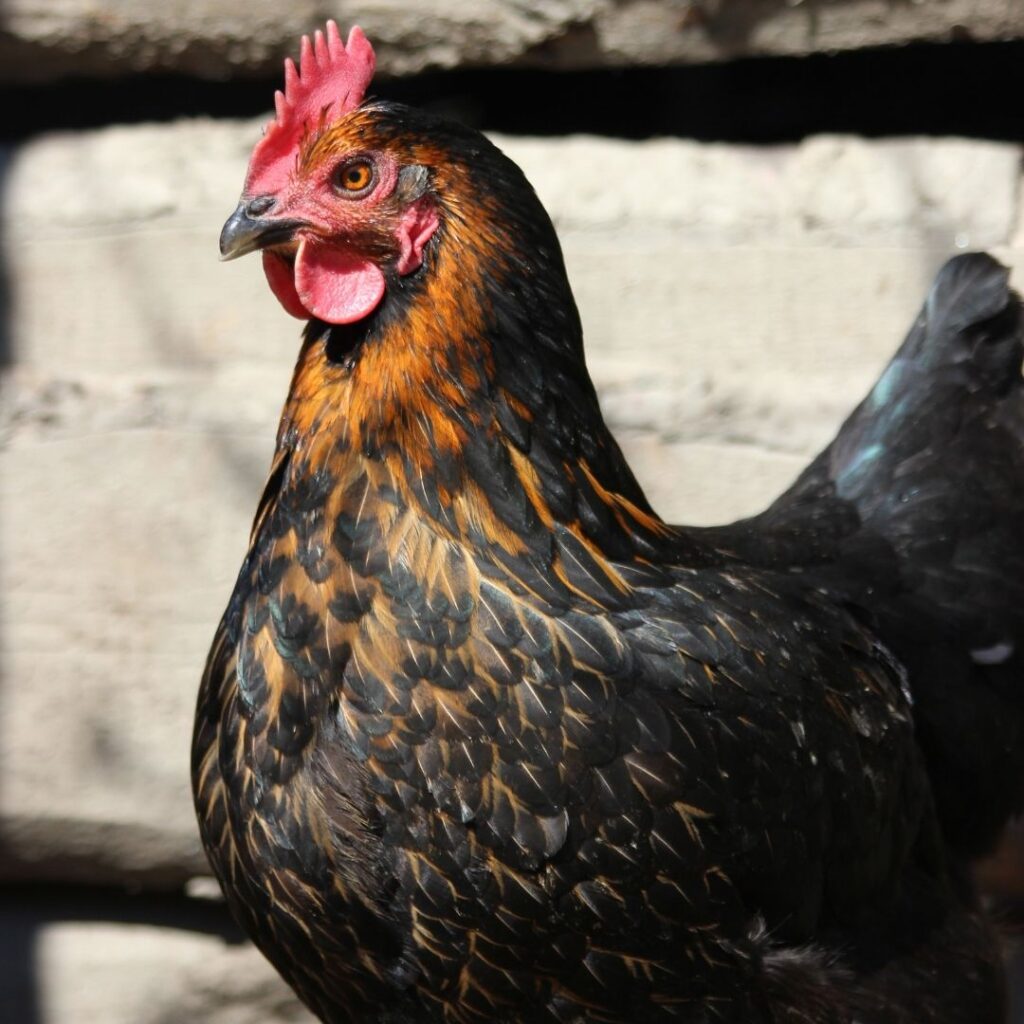
18. White Leghorn
The White Leghorn is a large breed of chicken imported from Italy. These are super layers.
They are known for their big personality and are popular among backyard chicken owners and commercial chicken farms.
This chicken doesn’t make it to the best pet category as it’s a nervous bird and can be too active for children. Although their alert and nervous nature make them great birds for alerting the rest of the flock of approaching predators.
Of all the cold hardy chicken breeds, this one is the most productive. Not to mention, surprisingly, they eat less than most other breeds.
The White Leghorn hens will lay over 300 (closer to 325) eggs a year. These are large white eggs.
My father-in-law favored these hens for eggs. His dad had a commercial chicken farm many years ago, and these hens were a source of family income. Their eggs were provided to area markets and grocers in the Norfolk County, Massachusetts area.
So, naturally, these are also part of our backyard flock. One of our favorite parts of these hens was that they started laying sooner than others. We could usually count on full-sized eggs and regular production around 4 months of age.
Read More About The Leghorn and It’s Large White Eggs Here.
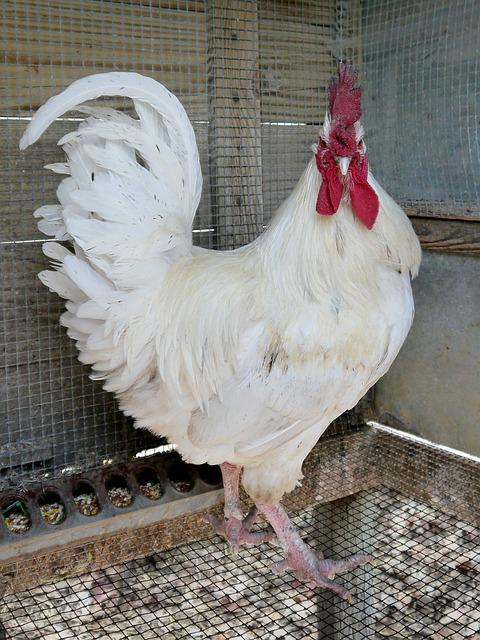
What do cold hardy chicken breeds have in common?
Many chicken breeds are considered to be “cold-hardy.” This means they have certain physical traits that help them handle colder weather.
Some of these features include feathers that keep them warm, a thick layer of fat under their skin, and legs covered in feathers down to the toes.
In addition, cold hardy chicken breeds typically lay year-round, even in cold weather. This is because their body functions slow down when it’s cold outside, so they don’t use as much energy and, therefore, still have enough stored up to lay eggs.
If you’re looking for a flock of chickens that can handle the harsh winters, consider choosing one or more of the many cold hardy chicken breeds out there!
How Do Chickens Stay Warm in the Winter?
Many people worry about their chickens when the weather starts to get cold. Will they be able to stay warm enough? Will they survive the winter?
Don’t worry. Your chickens will be just fine. Chickens have a few ways of keeping themselves warm in the winter. One is their feathers. Chickens have dense feathers that help keep them warm. They also have a thick layer of downy feathers called “muffs” which keep their heads and necks warm.
Another way chickens stay warm is by huddling together. When it’s cold outside, chickens gather together in a big group to share warmth. And finally, chickens can move around and get exercise to generate heat from their bodies.
So don’t worry – your chickens will be fine in the winter! Just follow some simple tips and make sure they’re not exposed to frostbite, which can cause serious damage or even death
Related Article: Pros and Cons of Raising Your Own Backyard Flock in Any Weather
Care tips
Ensure your coop is well insulated and draft-free, and provide plenty of food and fresh water for your birds. In addition, be sure to check on your chickens frequently during extreme weather conditions to ensure they are not suffering from frostbite or other injuries.
One of the most challenging parts of keeping chickens in cold temperatures is keeping fresh water from freezing. Changing water more frequently during the day is one way. Many chicken keepers use a bowl warmer to keep your flock hydrated.
Deep Litter method in Coops for Winter warmth
All you need to get started is some straw and your chicken (droppings). Rather than cleaning out the coop floor every week or two, you turn the soiled bedding and add a clean layer of straw on top (just enough to cover what is there.
Over the winter months, the litter will decompose, making it perfect for your compost pile or your garden (best to only use decomposed compost in the garden).
This will save you money, and the deep litter method allows for a natural heat source for your chickens in cold weather.
Collecting Eggs
Do this more frequently in temperatures below freezing. Your eggs can freeze, then crack, leaving you with nothing more than wasted food. No need to wash; follow our tips on cleaning eggs here.
What chickens are not cold-hardy?
There are many chicken breeds that don’t do well in cold weather. These chickens must be bred with the right traits to survive in harsher climates.
Chickens that don’t require a lot of insulation are more suited for warmer climates, while others may do better in cold weather. You may also notice they sport larger combs and wattles, which help them keep cooler in warmer climates.
Some chicken breeds do not do well in colder climates.
Many of the non-cold hardy chickens are referred to as Bantams. There are various bantam breeds. If you have cold winters, you want to avoid these in your flock.
Learn About 15+ Heat Tolerant Chicken Breeds Here.
Who is The American poultry association?
The American poultry association is an organization that promotes, educates, and supports chicken enthusiasts at all levels of interest. They are well respected, and if you find their symbol at the place you purchase your chickens, you can be assured that humane, quality practices are considered.
Raising Chickens; Cold Weather Chicken Breeds
So, whether you’re looking for a dual-purpose breed or a hen for laying eggs, you want to consider the best environment for the breed. Cold hardy chicken breeds are all-around great birds, and many do well in all climates.
Finding the best cold hardy chicken for your home flock will depend on your size, your goals (eggs, meat, or a pet bird), Will you want to have free-range chickens, and do you want just one single breed or a variety of breeds and egg size and colors.
You can read more about our top 15 egg-laying picks here.
There are many to choose from to fill out your backyard flock in no time.
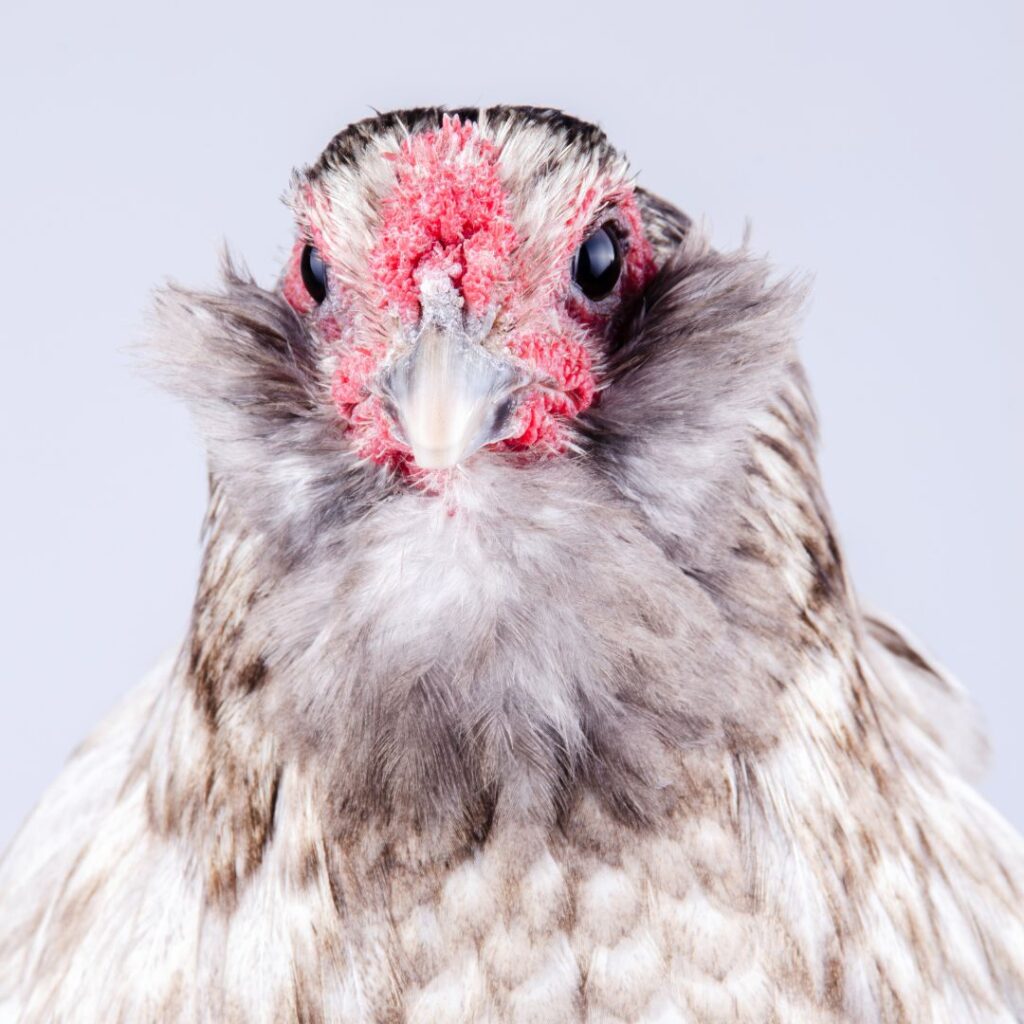

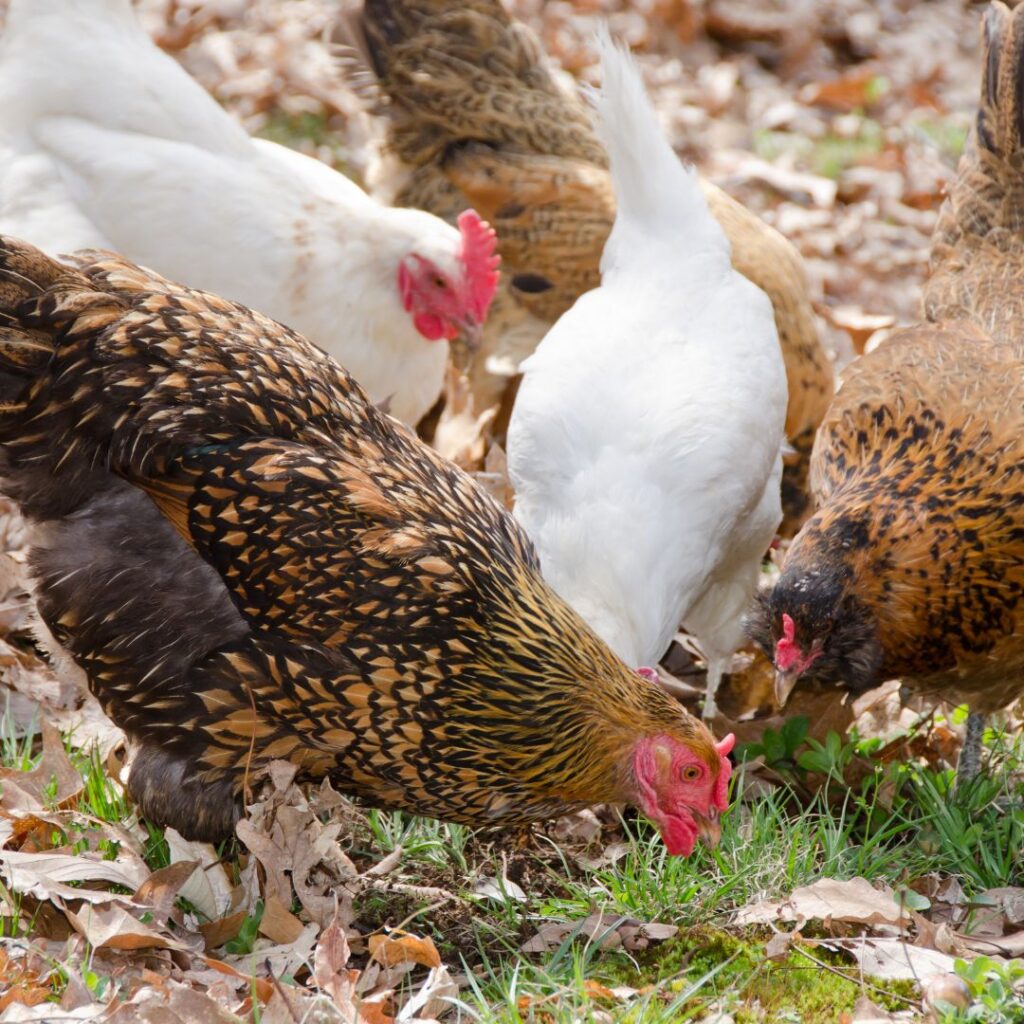
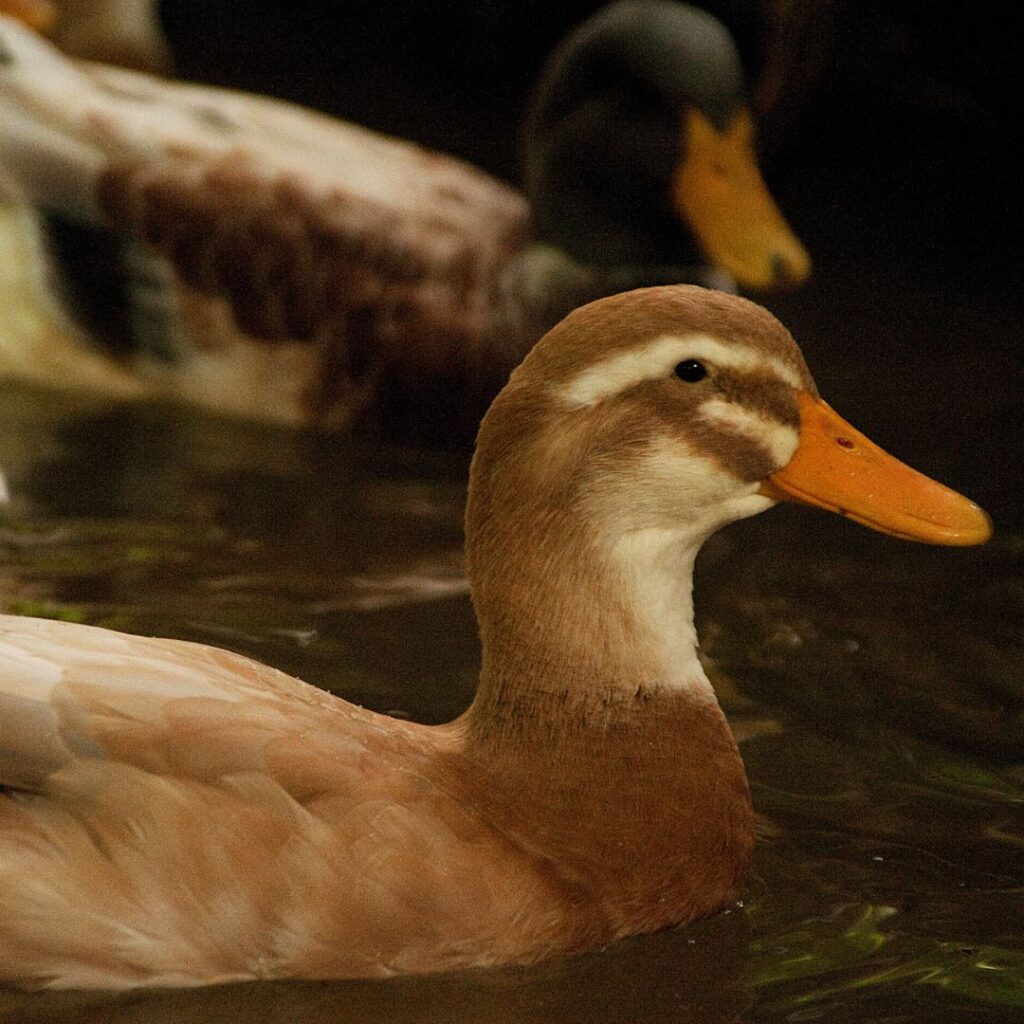

Pingback: How Many Eggs Do Chickens Lay? This May Surprise You! - Gilmore's
Pingback: 7 Tips; How To Keep Chickens Out Of Gardens, Flower Beds - Gilmore's
Pingback: How To Clean & Store Fresh Eggs From Backyard Chickens - Gilmore's
Pingback: Tips For Buying Backyard Chickens; Your 2022 guide - Gilmore's
Pingback: 11 Benefits Of Raising Backyard Chickens - Gilmore's
Pingback: How long do chickens lay eggs? Age, Production, and More! - Gilmore's
Pingback: Chicken Care In Winter Months; Warmth & Health Of Flock - Gilmore's